While Hollywood has given us everything from the scientifically accurate velociraptors of Jurassic Park to the cartoonish characters of The Land Before Time, the real prehistoric world often surpassed even the most creative imaginations. Paleontological discoveries continue to reveal dinosaurs that would seem implausible if pitched as movie monsters. From bizarre defense mechanisms to unexpected physical features, these ancient reptiles developed adaptations that challenge our understanding of evolutionary possibilities. The fossil record tells a story far stranger than fiction, reminding us that 165 million years of dinosaur evolution produced creatures that no screenwriter could have dreamed up.
The Therizinosaurus: Nature’s Edward Scissorhands
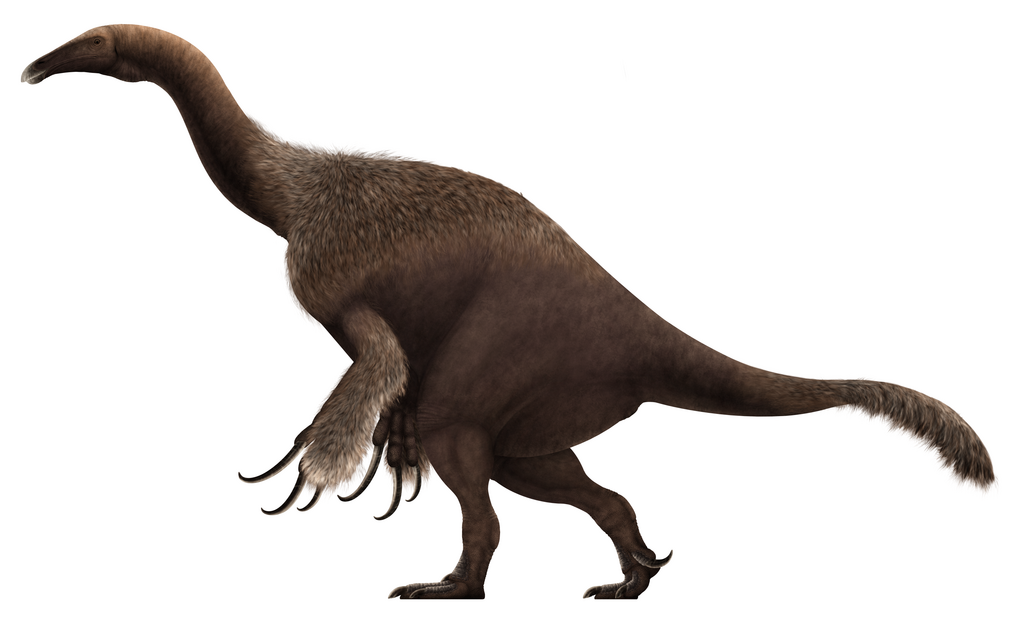
If you were to design a dinosaur meant to terrify audiences, you might not start with a pot-bellied, long-necked vegetarian, but Therizinosaurus breaks all expectations. This Late Cretaceous oddity sported the longest claws of any known animal in history, with some reaching nearly three feet in length. These massive scythe-like appendages weren’t used for hunting but were more likely tools for pulling down branches and vegetation. Imagine a creature the size of an elephant, covered in primitive feathers, sporting hands with claws longer than your arm—and using these deadly-looking weapons primarily to gather salad. Most bizarrely, Therizinosaurus belongs to the theropod group, the same family as predatory dinosaurs like T. rex, making it essentially a vegetarian relative of history’s most famous carnivore. Its evolutionary path represents one of paleontology’s strangest anatomical departures.
Microraptor: The Four-Winged Dinosaur

Before the discovery of Microraptor in the early 2000s, paleontologists wouldn’t have predicted a four-winged dinosaur that glided through ancient forests. This crow-sized dinosaur from Early Cretaceous China had long feathers on both its arms and legs, essentially creating four wing-like surfaces. The leg feathers ended in aerodynamic shapes similar to those of modern flying birds, suggesting they weren’t just for show but served a genuine aerodynamic purpose. Microraptor likely used these four wings to glide between trees in a method unlike any living animal today, possibly with its hind limbs splayed in a bat-like position or extended behind it like a modern bird’s tail. Scientists believe it represents an evolutionary experiment in flight that occurred before birds settled on their current two-winged configuration. This bizarre body plan challenges our understanding of how flight evolved and suggests that dinosaurs explored multiple aerial strategies before arriving at the birds we know today.
Deinocheirus: The “Terrible Hands” Mystery

For nearly 50 years, Deinocheirus stood as one of paleontology’s greatest mysteries. Discovered in 1965 in Mongolia, scientists initially found only a pair of massive eight-foot-long arms with claws, leading to decades of speculation about what this creature might have looked like. Some imagined a terrifying super-predator, while others theorized about a giant sloth-like dinosaur. The truth, revealed when more complete specimens were found in 2014, proved far stranger than any prediction. Deinocheirus turned out to be a humpbacked, duck-billed omnivore with a sailing fin on its back, tiny eyes, and a potbelly. At 36 feet long and weighing six tons, this dinosaur had evolved to feed from both land and water, with a skull designed to suck up aquatic vegetation and small animals from riverbeds. Its enormous arms, once thought to be weapons, were likely used for digging and gathering plants. This bizarre dinosaur exemplifies how evolution can produce body plans that defy categorization and prediction, even by expert paleontologists.
Spinosaurus: The Swimming Predator

Spinosaurus has undergone one of the most dramatic scientific reinterpretations in dinosaur paleontology. First discovered in Egypt in 1912, it was originally portrayed as a typical bipedal predator with a massive sail on its back. However, discoveries in the 2010s have transformed our understanding of this animal into something straight out of science fiction. Recent fossil evidence suggests Spinosaurus had dense bones for buoyancy control, a crocodile-like snout filled with conical teeth, and—most surprisingly—short hind limbs paired with a powerful, paddle-like tail for swimming. Unlike any other known large carnivorous dinosaur, Spinosaurus appears to have been primarily aquatic, hunting fish and other marine creatures in rivers and coastal waters of North Africa. This adaptation represents an evolutionary pathway no other large theropod dinosaur is known to have taken. The image of a 50-foot, seven-ton predator with a massive sail prowling ancient waterways like a crocodilian dragon highlights just how unpredictable dinosaur evolution could be.
Carnotaurus: The Horned Sprinter with Useless Arms

Carnotaurus presents a package of evolutionary oddities that make it one of the strangest predatory dinosaurs ever discovered. This Late Cretaceous hunter from Argentina sported two devil-like horns above its eyes—a feature rare among theropod dinosaurs and whose purpose continues to baffle paleontologists. Even more bizarre were its arms, which were reduced to such an extreme degree that they appear vestigial and non-functional, with tiny hands sporting four immobile finger nubbins. Despite this apparent disadvantage, Carnotaurus had powerful running legs with muscle attachments suggesting it was one of the fastest large predatory dinosaurs, capable of remarkable bursts of speed. Adding to its strange appearance was its skin, known from exceptionally preserved fossils, which didn’t have feathers but instead featured rows of bumpy scales and large, bony scutes that formed ridge-like projections along its body. This combination of features—horns, useless arms, sprinter’s legs, and armored skin—creates a predator unlike any other known dinosaur or modern animal.
Pegomastax: The Vampire Parrot
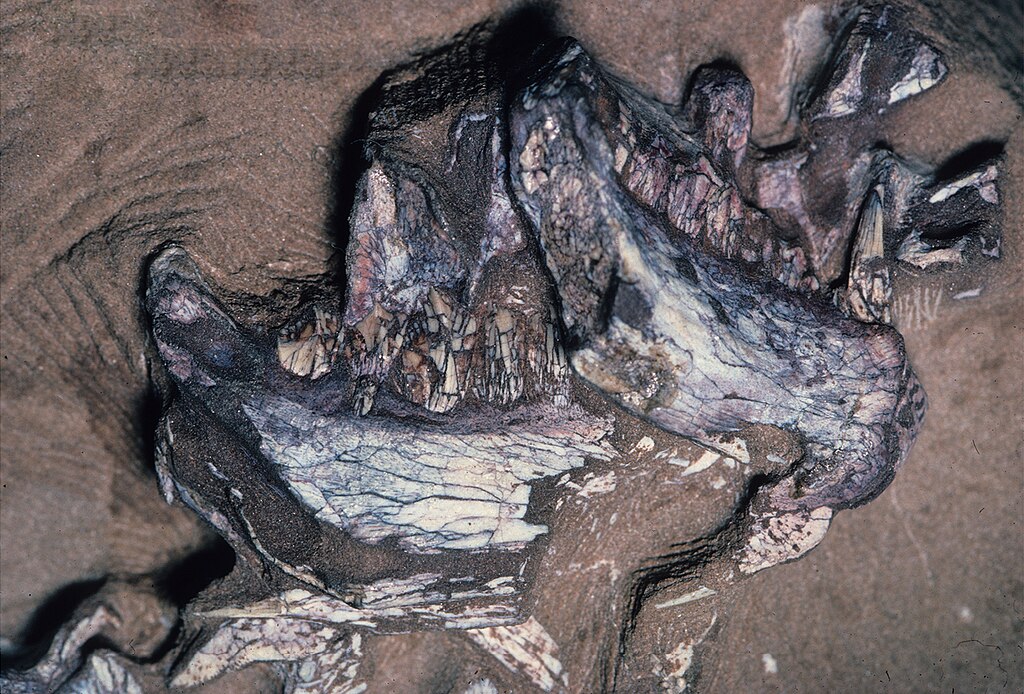
Discovered in South Africa, Pegomastax represents one of the most visually confounding dinosaurs ever unearthed. This turkey-sized herbivore combined features that seemingly don’t belong together: a parrot-like beak, vampire-like fangs in the front of its mouth, and porcupine-like quills covering its body. Despite its fearsome dental arrangement, with self-sharpening canine-like teeth at the front of its jaws, scientists believe Pegomastax used these fangs not for meat-eating but for defense and possibly for processing tough plant material. The strange combination of features makes it look like something assembled from parts of different animals. Its body was covered in bristles or quill-like structures that would have given it a spiky appearance unlike most dinosaurs portrayed in popular media. Pegomastax belonged to the heterodontosaurid family, a group of early ornithischian dinosaurs known for their specialized and varied tooth arrangements, but even among its unusual relatives, it stands out as particularly bizarre.
Tsintaosaurus: The Unicorn Controversy

When Tsintaosaurus was first described in 1958 from fossils found in China, paleontologists reconstructed it with a single, unicorn-like horn projecting forward from its forehead, creating one of the most peculiar-looking dinosaurs ever presented to the public. This hadrosaur (duck-billed dinosaur) became notorious for its bizarre headgear, which seemed to defy evolutionary logic. For decades, this unicorn interpretation persisted in museums and dinosaur books worldwide. However, in 2013, new fossil evidence and reanalysis suggested the “unicorn horn” was actually a broken and displaced piece of the dinosaur’s crest. The revised reconstruction shows Tsintaosaurus with an elevated, pump-handle-shaped crest that would have projected both upward and backward from the skull. Even with this correction, Tsintaosaurus remains unusual among hadrosaurs for its distinctive head ornamentation. The case of this dinosaur demonstrates how fragmentary fossil evidence can lead to reconstructions stranger than reality, while highlighting how even corrected versions of dinosaur appearances can still be remarkably odd by modern animal standards.
Yi qi: The Dragon-Winged Dinosaur

Discovered in China and described in 2015, Yi qi (pronounced “ee chee”) represents one of the most unexpected dinosaur body plans ever found. This small feathered dinosaur, about the size of a pigeon, possessed bat-like wings—a feature never before seen in any dinosaur. Yi qi had elongated fingers supporting a membranous wing, similar to modern bats but completely different from the feather-based wings of birds and other flying dinosaurs. A rod-like bone extending from the wrist appears to have helped support this membrane, creating a wing structure unlike anything known from other dinosaurs or birds. The combination of feathers covering most of its body with membranous wings creates an animal that would look like a strange hybrid between a bird and a bat. Scientists remain uncertain exactly how Yi qi used its wings—whether for powered flight, gliding, or display—but this creature demonstrates that dinosaurs evolved flight-related structures in ways completely unexpected and unexplored by modern animals. Yi qi represents a fascinating evolutionary experiment that appeared and disappeared during the Jurassic without leaving modern descendants.
Nothronychus: The Giant Sloth-Turtle Hybrid

When paleontologists first pieced together Nothronychus from the American Southwest, they created an image of a dinosaur so bizarre it seemed like a hoax. This distant relative of Therizinosaurus combined several improbable features: a pot-bellied body, a turtle-like beak, massive claws extending up to a foot in length, and a neck so long and flexible it could likely reach far above its head or down to its feet. Most surprisingly, this 15-foot-tall creature was a confirmed member of the theropod dinosaur group—the same family as Tyrannosaurus rex—yet it had abandoned meat-eating entirely to become a specialized plant-eater. Nothronychus had evolved broad, four-footed stance with splayed legs that resembled those of a giant ground sloth, despite being descended from two-legged predatory ancestors. Its center of gravity had shifted forward so dramatically that it needed a counterbalancing tail to prevent it from toppling over. This bizarre combination of features makes Nothronychus look like evolution assembled parts from completely different animal archetypes, creating a creature that defies easy classification or comparison to anything alive today.
Concavenator: The Dinosaur With a Shark Fin
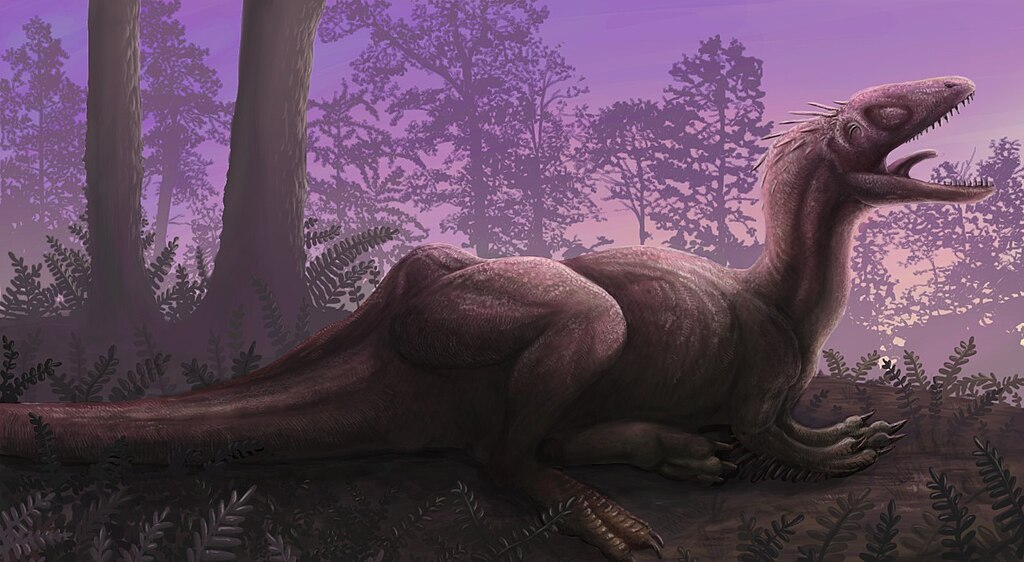
Discovered in Spain in 2010, Concavenator corcovatus immediately puzzled paleontologists with its unique anatomical features. This medium-sized predatory dinosaur sported a strange triangular hump or sail directly above its hips—not along its back like Spinosaurus, but concentrated in a single bizarre projection. This positioning makes little sense for temperature regulation (the usual explanation for dinosaur sails) and may instead have been used for display or species recognition. Even stranger, Concavenator possessed bony knobs along its forearms that appear to have anchored structures similar to the quill knobs found in modern birds, suggesting it may have had primitive feather-like structures despite being relatively far removed from the direct ancestors of birds. This combination of features—the unusual sail placement and evidence of arm feathers in a dinosaur not closely related to birds—makes Concavenator an evolutionary oddity that scientists are still working to fully understand. The discovery challenged previous assumptions about when and where feather-like structures evolved in theropod dinosaurs.
Halszkaraptor: The Duck-Necked Dinosaur That Swam
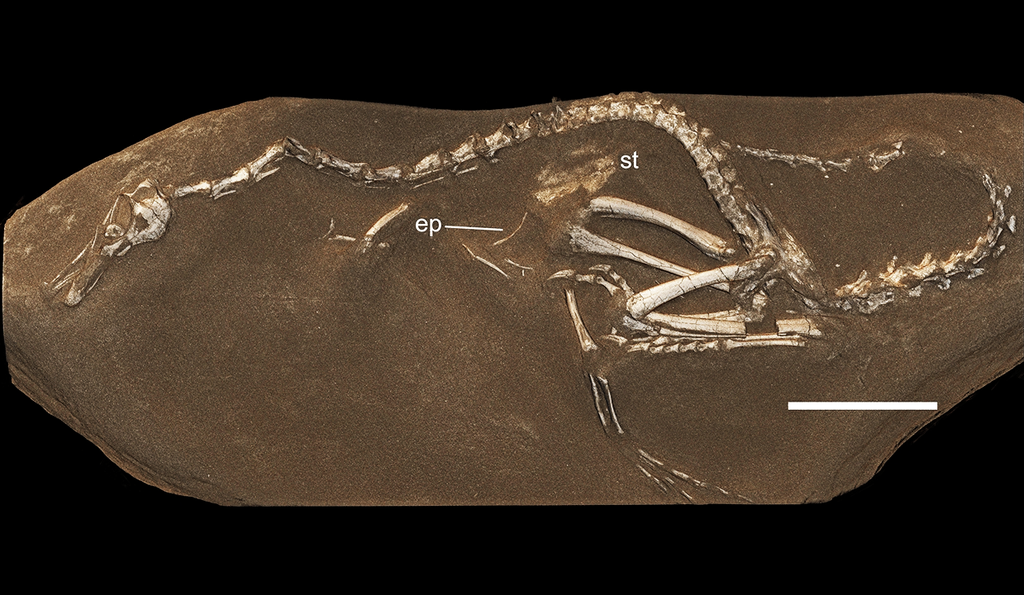
When Halszkaraptor was unveiled to the scientific community in 2017 after being rescued from fossil poachers, paleontologists initially struggled to believe it was a genuine specimen rather than a composite fake. This small predator from Mongolia possessed one of the strangest combinations of features ever documented in a dinosaur: a long, flexible swan-like neck, a bill similar to modern waterfowl, arms that resembled flippers, and teeth behind its bill for capturing prey. Unlike other theropod dinosaurs, Halszkaraptor appears to have been semi-aquatic, using its flipper-like forelimbs to propel itself through water in a manner similar to modern penguins. Advanced scanning techniques confirmed the fossil was authentic and not a chimera created by combining different animals. This bizarre dinosaur belongs to the dromaeosaurid family—the same group as Velociraptor—yet evolved a body plan so different from its relatives that it occupies a category all its own. Halszkaraptor demonstrates that dinosaurs invaded aquatic niches in ways previously unknown, creating creatures that combined features of waterfowl, penguins, and raptor dinosaurs in a single improbable package.
Incisivosaurus: The Buck-Toothed Dinosaur
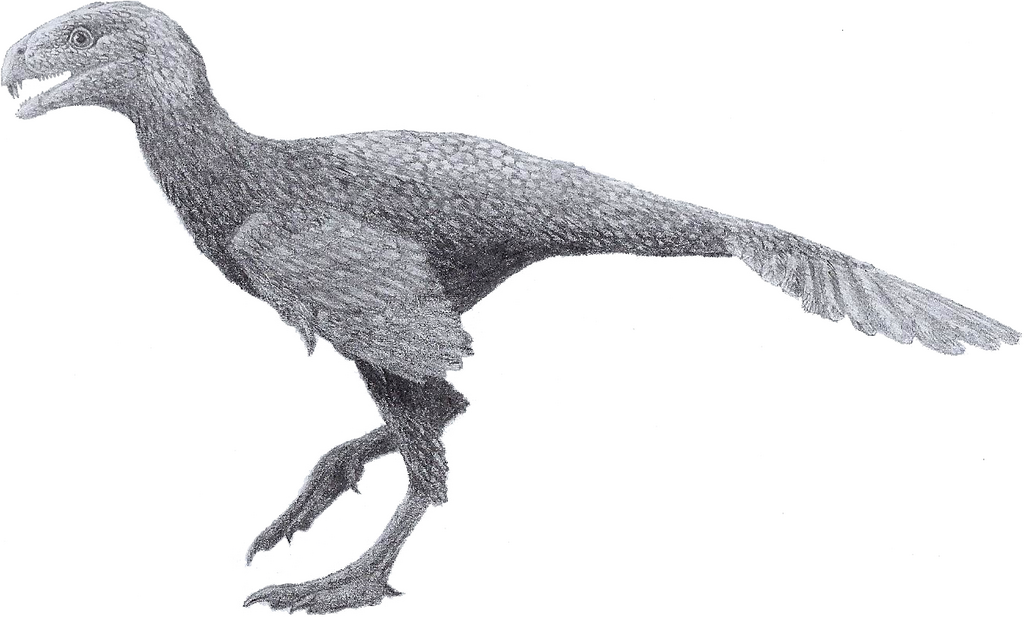
Incisivosaurus stands out among predatory dinosaurs for having perhaps the most comical-looking facial anatomy of any theropod. This small dinosaur from Early Cretaceous China possessed a pair of buck teeth at the front of its upper jaw that protruded forward like those of a modern rabbit or rodent. These specialized front teeth were unlike anything seen in other predatory dinosaurs and appear to have been an adaptation for a specialized diet, possibly including tough plant materials or hard-shelled seeds. The rest of its skull had a short, parrot-like appearance, adding to its unusual look. Despite these herbivore-like features, Incisivosaurus belonged to the oviraptorosaurian group of theropod dinosaurs, many of which would later evolve into toothless, beaked forms. Paleontologists believe it represents a transitional form showing how certain predatory dinosaurs began to shift toward plant-based diets. The buck-toothed appearance of Incisivosaurus serves as a reminder that dinosaur evolution produced facial features and dental specializations that would look bizarre or comical by modern standards.
The Ever-Expanding Frontiers of Dinosaur Weirdness

As paleontology continues to advance through new discoveries and technologies, our understanding of dinosaur diversity grows increasingly complex and surprising. The examples highlighted here represent just a fraction of the bizarre evolutionary experiments that occurred during the 165 million years dinosaurs dominated Earth’s terrestrial ecosystems. From four-winged gliders to aquatic predators, from vampire-toothed herbivores to unicorn-crested duck-bills, dinosaurs repeatedly evolved features that would seem implausible if not documented in the fossil record. What makes these discoveries so remarkable is how they challenge our expectations about evolutionary constraints and possibilities. With only about 700-900 dinosaur species named so far—representing a tiny fraction of all dinosaur species that ever lived—we can be certain that many more bizarre and unexpected dinosaur forms await discovery in rock formations around the world. Each new finding reminds us that prehistoric reality often exceeds our imagination, and that evolution, given enough time, produces life forms stranger than any fiction we could create.



